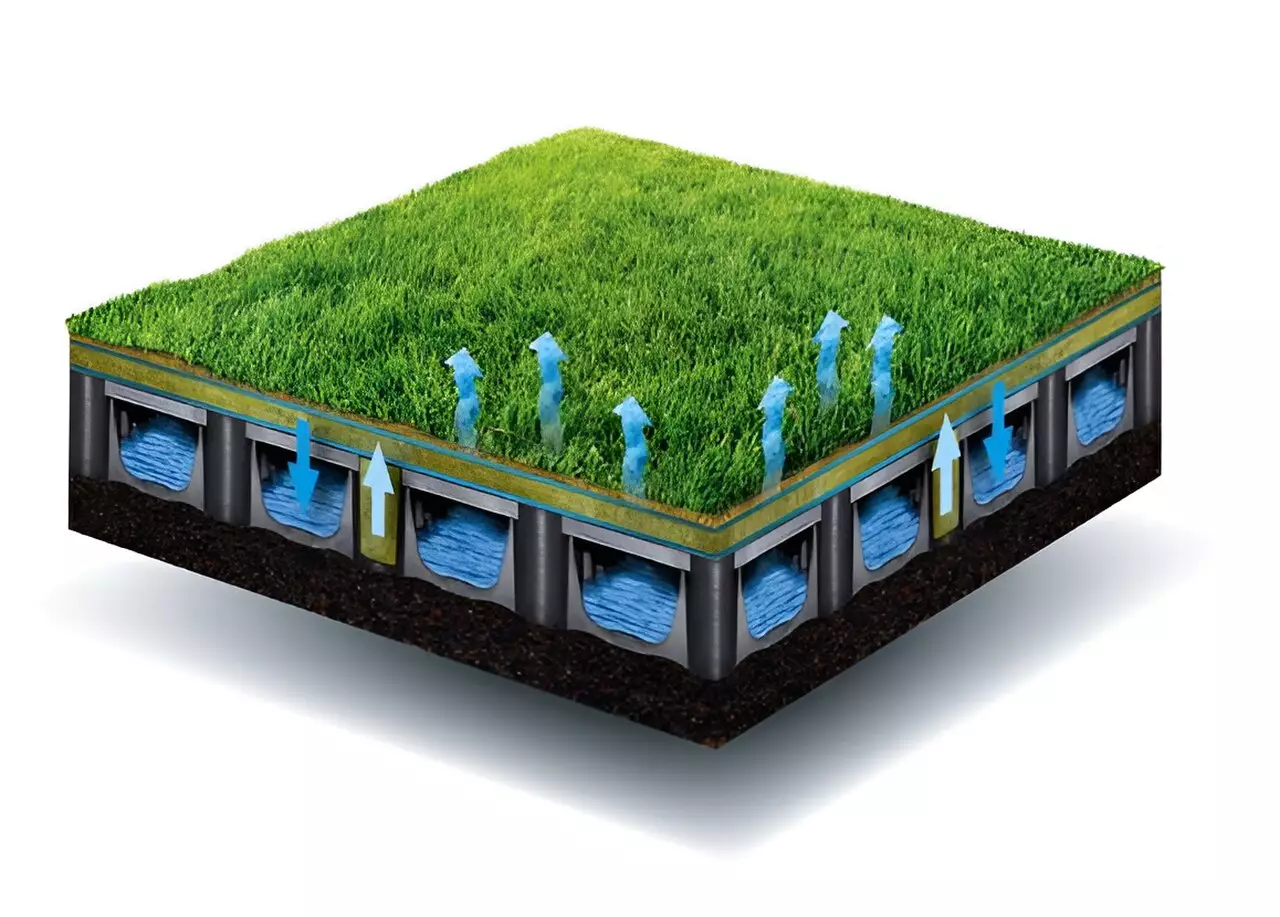Living in cities often means limited space for outdoor sports activities due to the lack of natural grass fields. As a result, many public sports facilities have turned to artificial turf to accommodate heavy use. While artificial turf may seem like a practical solution, there are drawbacks associated with its use. However, researchers in the Netherlands have come up with a innovative solution to address some of these issues by integrating a subsurface water storage and capillary irrigation system into artificial turf sports fields.
Benefits of Subsurface Water Storage System
According to Dr. Marjolein van Huijgevoort, a hydrologist at KWR Water Research Institute, incorporating a subsurface water storage system in artificial turf fields can significantly reduce surface temperatures compared to traditional artificial turf. The integration of an open water storage layer beneath the artificial turf allows rainwater to be stored and transported back up to the surface through cylinders. This process of evaporative cooling and capillary rise helps regulate the temperature of the turf, preventing it from reaching dangerously high levels.
Impact on Surface Temperature
A field experiment conducted in Amsterdam demonstrated the effectiveness of the cooling turf system. The researchers found that on a hot day in June 2020, the surface temperature of the cooled turf was only 1.7°C higher than natural grass, significantly lower than the 62.5°C recorded on conventional artificial turf. Additionally, the lower air temperatures above the cooled plots suggest that the system could potentially reduce the urban heat island effect, making it more environmentally friendly.
The cooling turf system offers a range of benefits, combining the durability of artificial turf with the cooling properties of natural grass. Not only does it create a more comfortable playing environment, but it also has the capacity to store rainwater, reducing the need for stormwater drainage systems and helping to prevent urban flooding. Furthermore, the system can be watered directly when needed, similar to natural grass, ensuring that it remains cool and functional during dry periods.
While the cooling turf system shows great promise, there are challenges to consider, particularly in terms of installation costs. The system can be up to twice as expensive as conventional artificial turf, making it a significant investment for sports facilities. A full-scale cost-benefit analysis is necessary to determine the overall value of implementing this system. Additionally, further research is needed to understand how cooling turf could impact the surrounding areas and cities as a whole, especially in different climates. Exploring different storage sizes, materials, and infills will also be crucial in optimizing the system for maximum efficiency.
The introduction of a subsurface water storage and capillary irrigation system in artificial turf fields presents a promising solution to the challenges associated with conventional artificial turf. By reducing surface temperatures, improving player comfort, and contributing to environmental sustainability, the cooling turf system offers a unique combination of benefits for urban sports facilities. As research in this area continues to evolve, it is clear that the future of artificial turf lies in innovative and sustainable solutions that prioritize both player safety and environmental well-being.


Leave a Reply